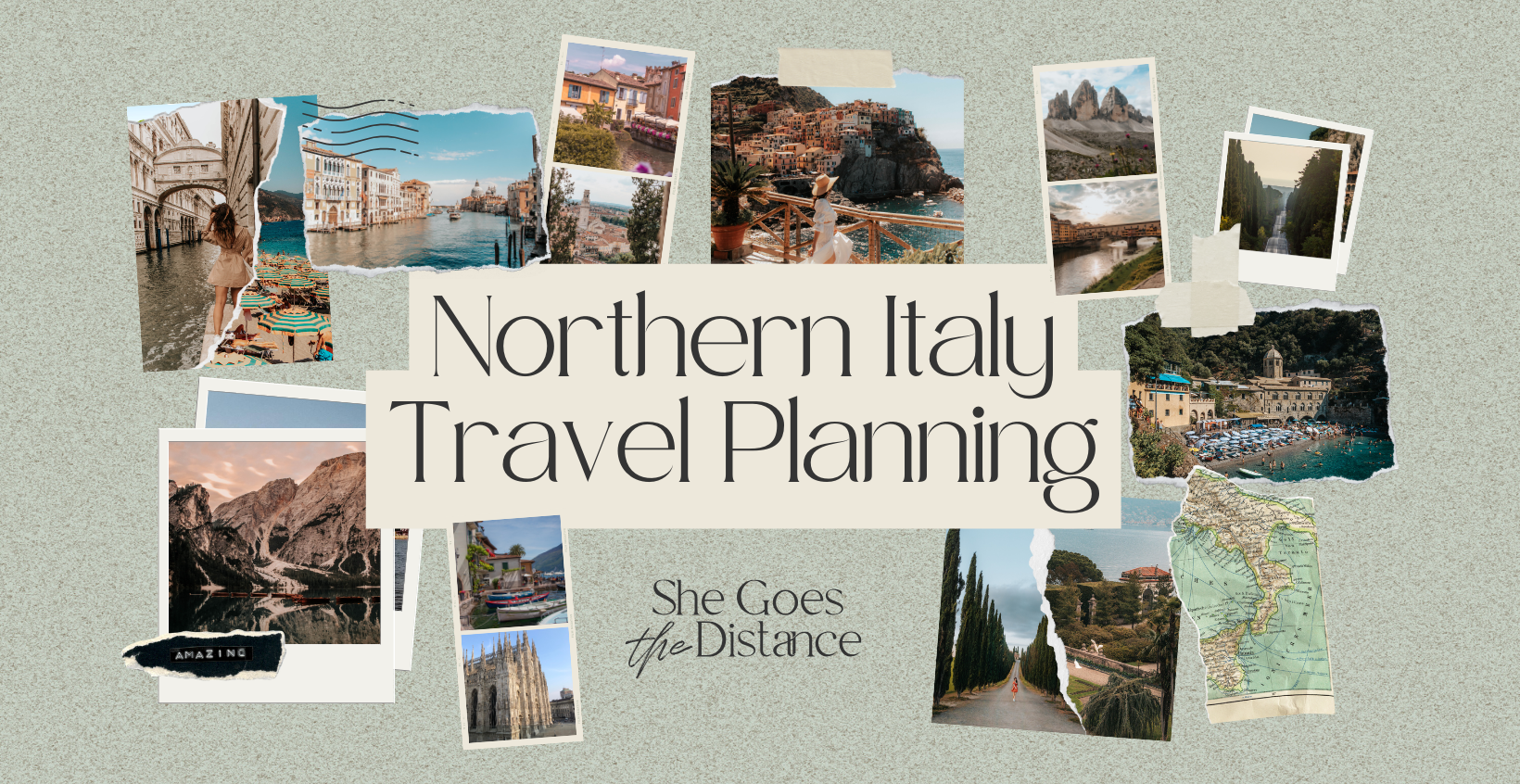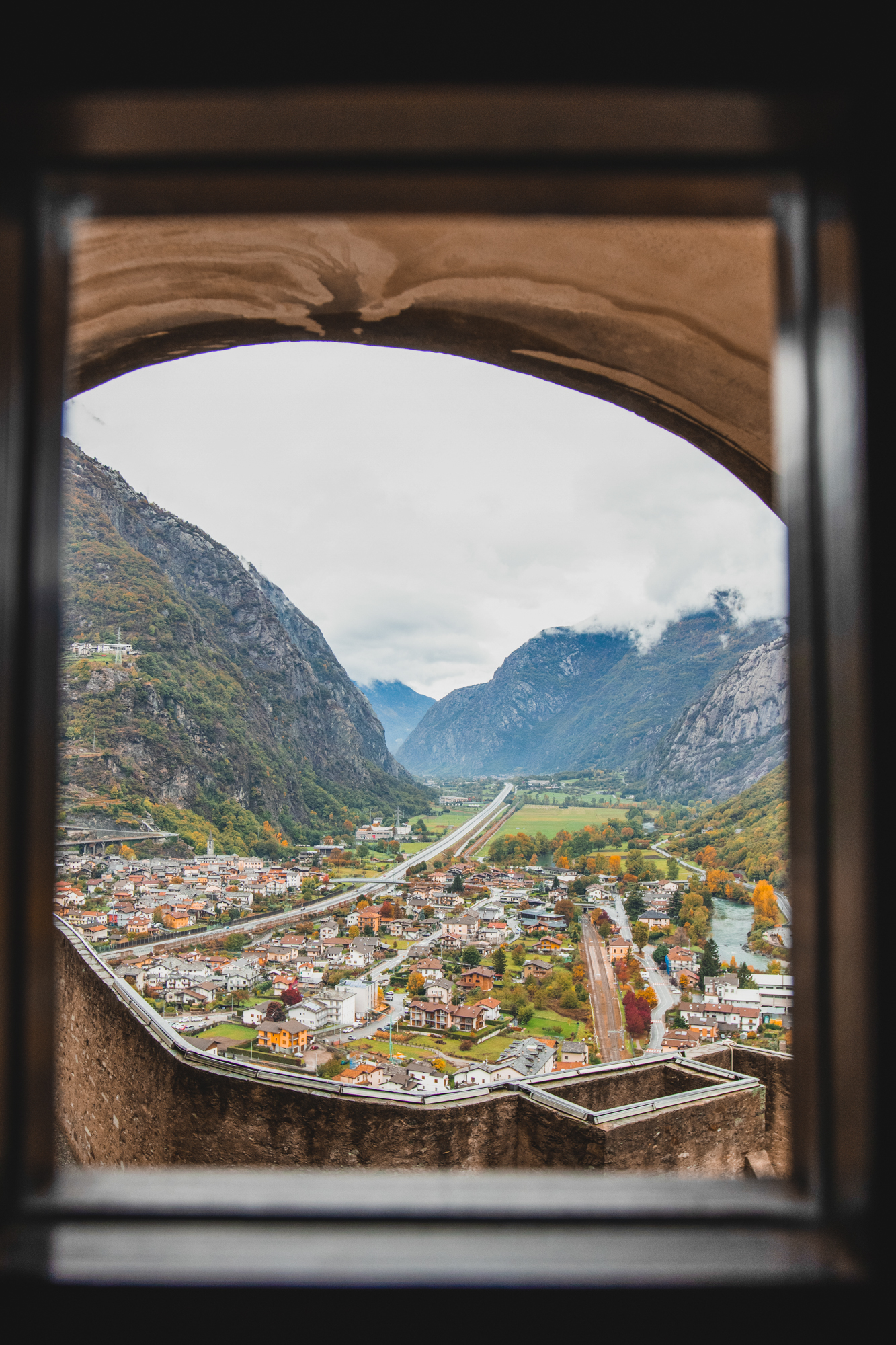
Last Updated on March 12, 2024 by Michela
Fewer places in Italy have a more famous military history than the Fort of Bard. Located at the gateway of Italy’s smallest region, Valle d’Aosta, the Bard Fort held a key strategic position in the Western Alps that more than one country wanted a piece of. Today, you can walk through time exploring the military fortification and the haunting, small village that surrounds it.
If you are planning a trip to the Fort of Bard or wondering if it is worth adding to your northern Italy itinerary, this information-packed guide is for you.
Some of these links are affiliate links. This means if you make a purchase through that link, I receive a small commission at no extra cost to you. Read my full disclosure!
The History of Bard Fort
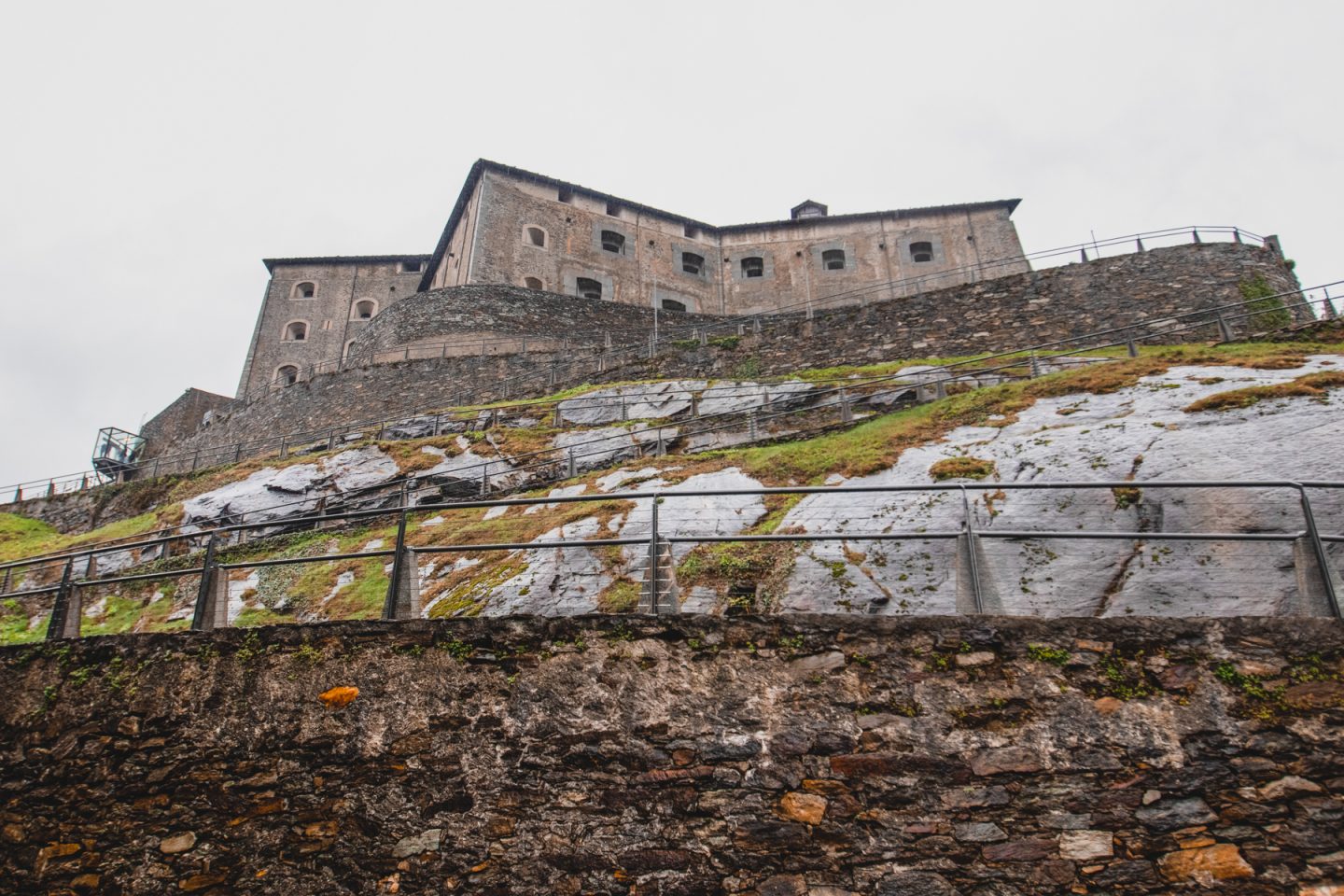
Fort of Bard, Bard Fort, Fort Bard or Forte di Bard: no matter how you choose to call it, its name in European military history is renowned.
The fort is located at the entrance of Valle d’Aosta, on a curve of the Dora Baltea River, a strategic point for reaching the rest of Italy from the Western Alps (France). The Lords of Bard originally owned the castle, first mentioned in 1034. Its significance greatly increased when the Savoy family conquered it in 1242 and held onto it until the 20th century.
To put into perspective how powerful the Savoy family was, they eventually went on to rule the entire island of Sicily, the island of Sardegna and then lead the unification of Italy and become the country’s first kings.
Funnily enough, the military fortification had not seen any real battles until Napoleon Bonaparte conquered it in May of 1800. However, it is worth noting that a group of 400 Austrian and Italian troops defended the fort for over two weeks against Napoleon’s 40,000 men.
Napoleon then ordered the fort to be completely destroyed, and it was.
Carlo Felice of Savoy in the 19th century, around 1830, rebuilt the fort thanks to the renovations led by military engineer Francesco Antonio Olivero, who gave the fort the structure it has today. Olivero ensured the fort could last three months of battle, with 50 gun ports and room for 900 soldiers. However, shortly after, Italy unified and the fort lost military significance.
Today, you can experience the history firsthand through walking the halls of the fort and through interactive museums. The structure is also now the main cultural center in the Aosta Valley, so there are often events and exhibitions.
How to Reach the Fort of Bard
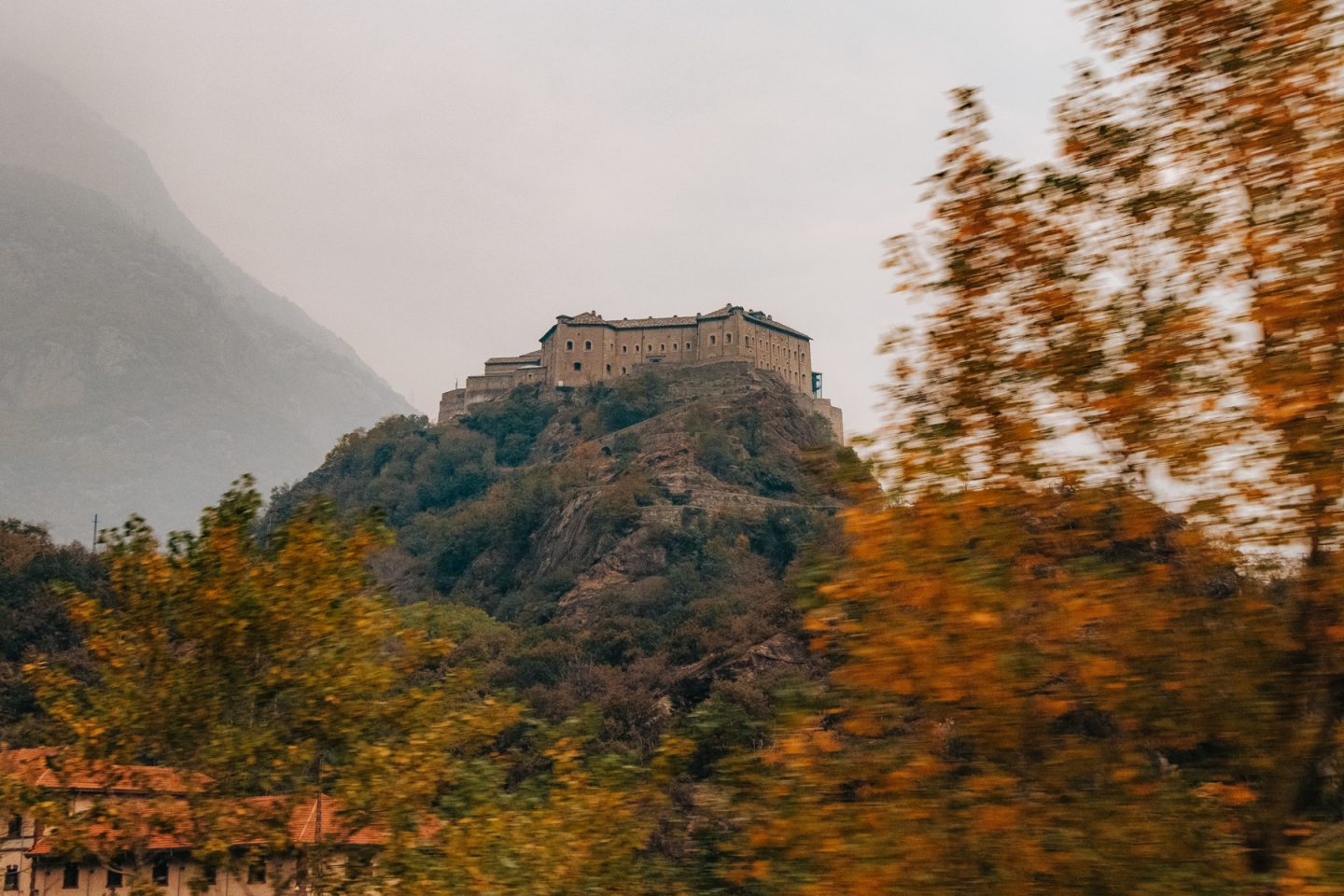
By Car
Of all the ways to reach Bard Fort, arriving by car is the easiest and what I recommend. There are multiple parking lots and a large underground parking garage at the foot of the fort.
The parking garage costs €3 euros on hour on weekdays and €4 on weekends and holidays.
I recommend you park at one of the free parking lots. You have to climb up some steep steps to reach the town of Bard, but it is an easy way to save money.
The free parking lots are indicated on the road, as they don’t have specific addresses:
- San Giovanni Lot (P2) along the S.S. 26
- Via Vittorio Emanuele, 11020 Bard
Thinking about renting a car? Check out everything you need to know about driving in Italy.
By Public Transportation
Arriving by public transportation is not simple, but doable. You will have to arrive by regional train to the Pont-Saint-Martin train station.
You must then take a bus from Piazza IV Novembre. There is a bus about every hour, with two buses nan hour during the busier times of day. Here you can look at the timetable. To arrive at Bard, look at the second page of the timetable; to return, look at the first page.
If you are on a local train, there is a stop close to the fortress, called Hone-Bard.
By Walking
The most interesting but least convenient way to reach the Fort of Bard is on foot. The military fortress is located along the Via Francigena Route, an ancient pilgrimage pathway that goes from Canterbury, England to Rome, Italy!
Good to know: Covid-19 precautionary regulations are still in effect while visiting the fort. You must wear a mask and present a Green Pass/proof of vaccination along with a form of identification to visit.
Buying Tickets to the Fort of Bard
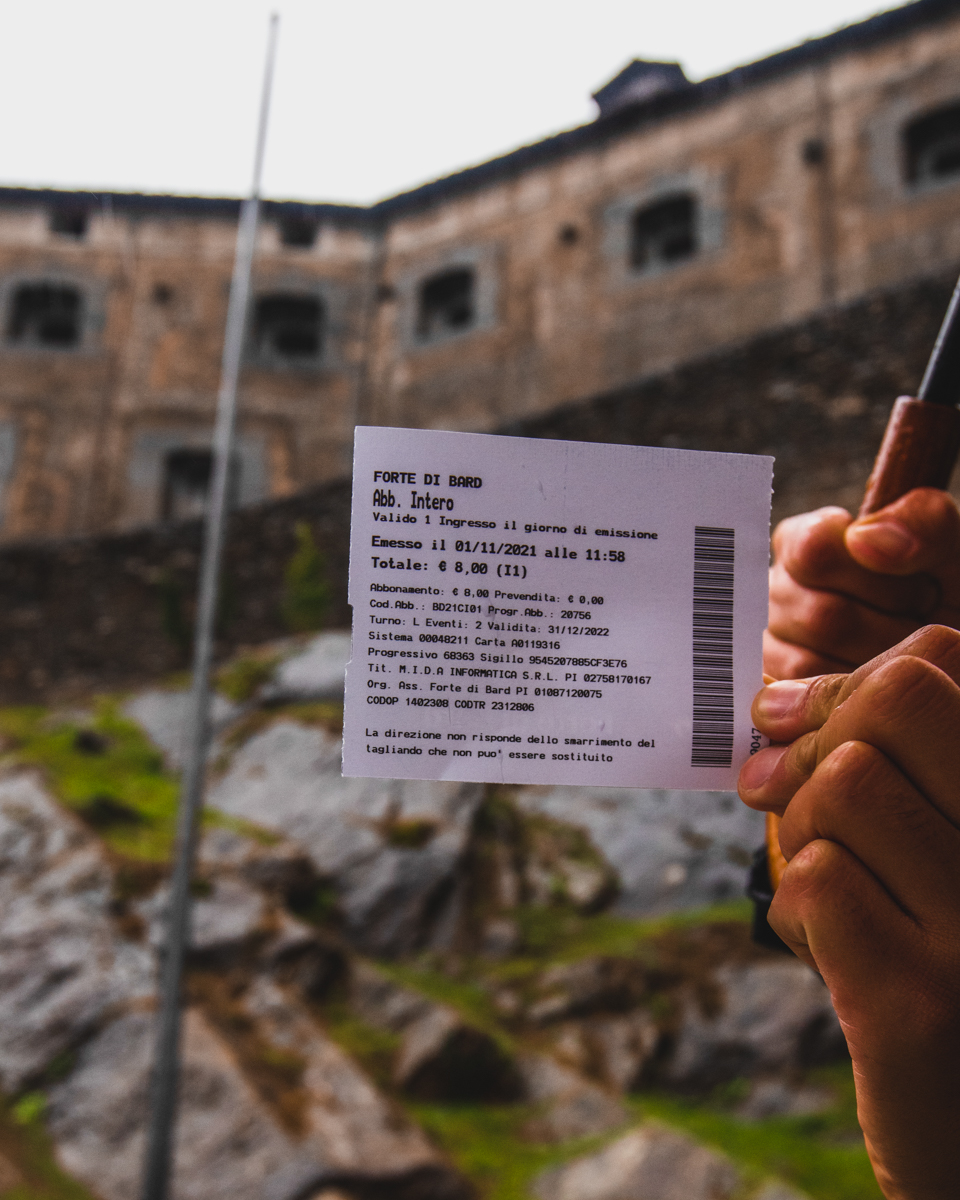
The easiest way to buy your entrance tickets is to purchase them on-site at the ticket office. Lines can get long but often move very quickly.
Entry to the fort for visitors aged 0-25 years old is free. For visitors 26-64, tickets start at €8, whereas for 65+, tickets start at €7. The entrance ticket allows you to visit the fort plus one museum of your choice.
Fort Bard has multiple fixed museums as well as rotating exhibitions that come at an extra cost. You can check out the ticket packages to understand how much it costs if you would like to visit all the museums or certain exhibitions.
Good to know: The fort is closed to visitors on Mondays.
Planning Your Visit
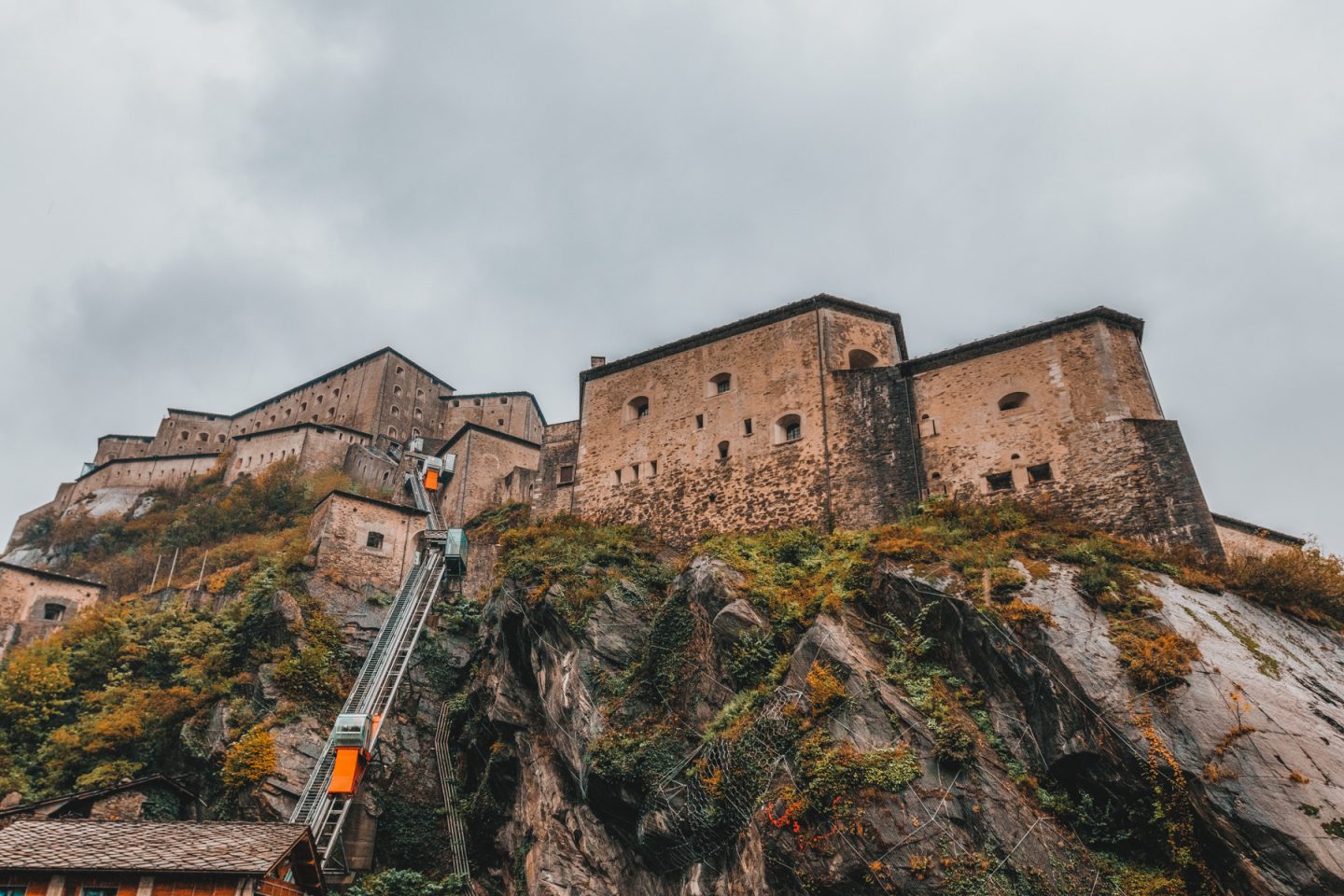
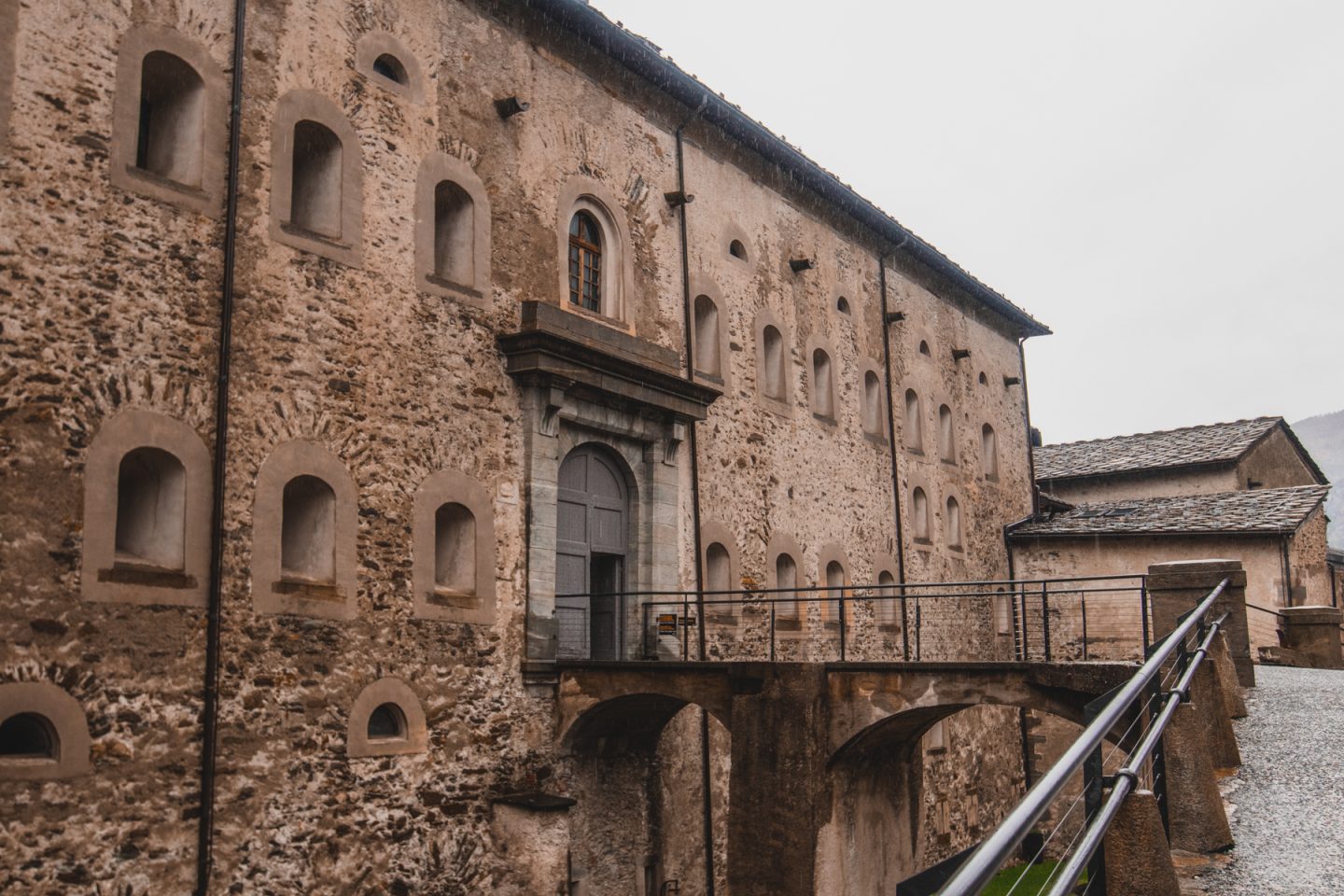
Even though the line moves quickly to buy your tickets, it moves less quickly for taking the elevator up to the visitor starting point. I recommend, if you can, walking to the visitor starting point so that you can jump right into your visit.
You will be doing a lot of walking up and down because the fortress is on a huge rock formation.
The top level is the Carlo Alberto Opera, the main defense area and recognizable for its characteristic internal Piazza d’Armi.
The middle level is the Vittorio Opera. Today this area hosts the temporarily-closed Children’s Museum, so there is not much to see.
The third level is the Ferdinando Opera, made up of two buildings that today host two museums inside.
Fun fact: The village of Bard and the Fort of Bard were used as a location in the film Avengers: Age of Ultron.
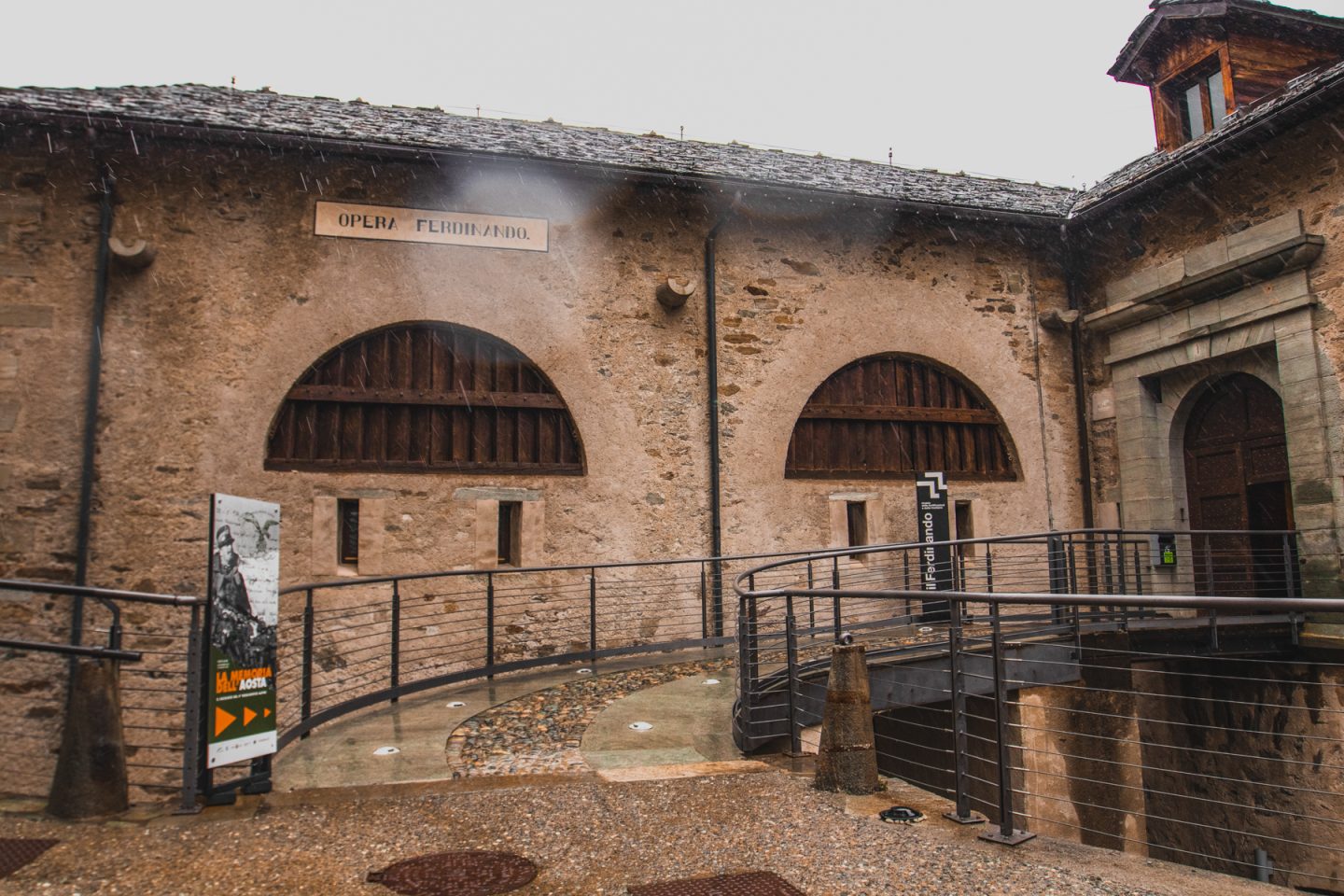
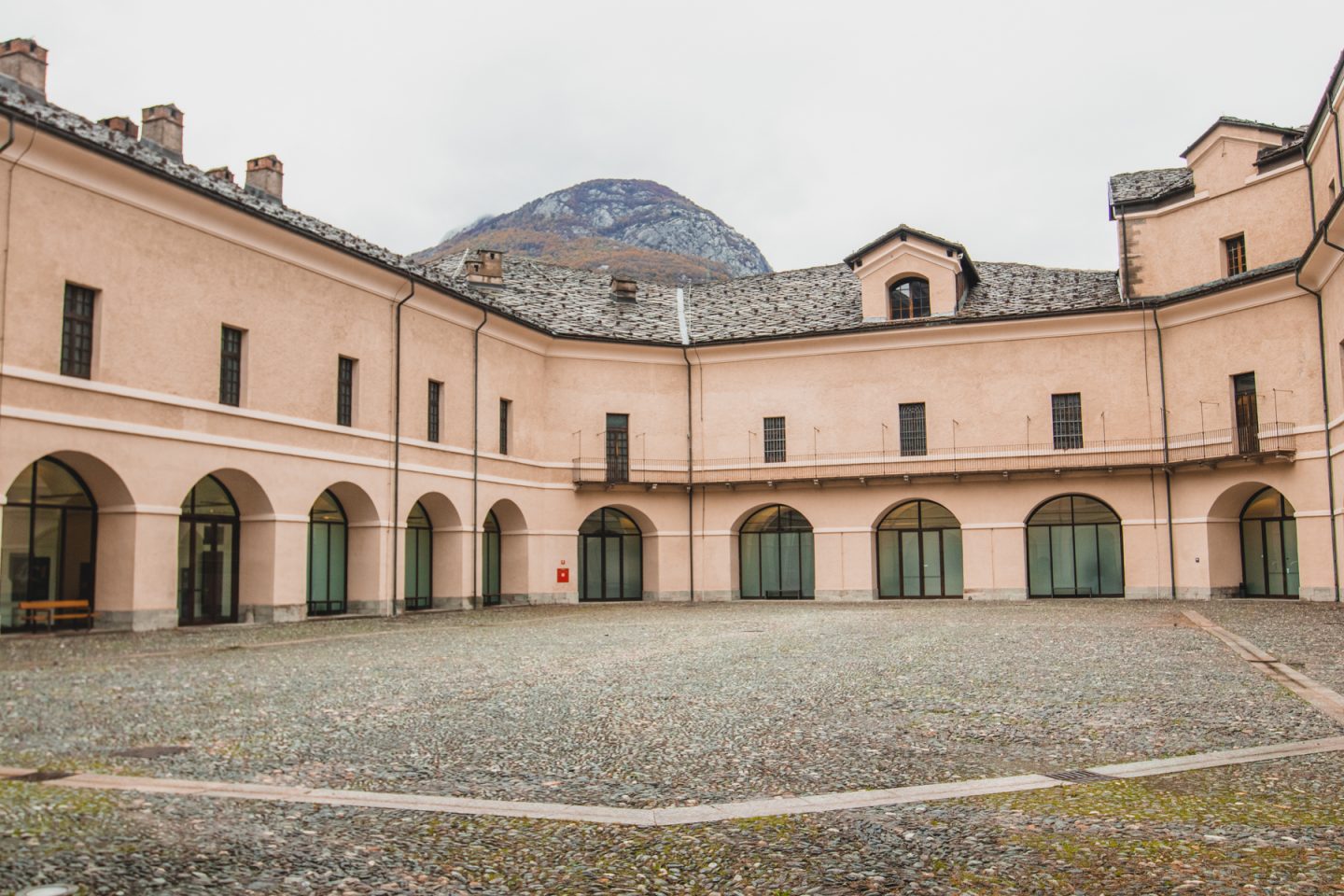
Museums at the Bard Fort
- The Museum of the Alps: The Alps museum is great to visit if you would like to know more about the geographic area in general of autonomous region of Valle d’Aosta.
- The Prisons: Visit this museum if you want a real look at what the fortress would have been used for and its military history. You get to actually see the prison enclosures.
- The Ferdinando Museum of Fortifications: This museum focuses on military tactics and studies.
- The Ferdinando Museum of Frontiers: This museum is concentrated on the political aspects of the fort’s strategic positioning and the history of the borders in the area.
How long does visiting the Fort of Bard take?
The time it takes to visit Fort of Bard may vary. If you do the traditional entrance ticket that includes access to one of the museums housed within the military structure, then your visit will likely take between 2-3 hours.
If you want to visit more museums, your visit will take about half a day.
Is visiting the Fort of Bard accessible?
The fortress is accessible to people with disabilities thanks to the presence of elevators/funiculars that take you up and down to the different levels of the fort.
There are some areas that are not as easy to navigate, like the medieval village of Bard, the exterior cobblestone paths of the fortress and the free parking lots.
If you are traveling with a wheelchair or need an accessible entrance to the fort, I highly suggest utilizing the parking garage.
What kind of amenities are offered at the structure?
Restaurant
Ever eaten in a military fortress? I highly suggest staying long enough at Fort Bard to dine in what used to be the old gunpowder warehouse at Caffetteria di Gola.
The restaurant serves traditional Valle d’Aosta cuisine (I recommend the polenta!). The coolest part is that if you get a table along the wall, you will likely have some small fortress windows to peek out of over the valley below.
Hotel
Fort Bard offers a completely unique experience from many other tourist attractions: you can actually spend the night in the fortress walls!
From €90 to €200 per night, you can stay at Hotel Cavour et des Officiers, in one of the rooms located in the old garrison of the fort.
If you are interested in this experience, you can book or ask information by writing an email to hotelcavour@fortedibard.it.
Bookshop
Like any good tourist attraction, there is a bookshop dedicated to souvenirs and relevant publications about the fortress available to purchase. It is located near the ticket shop.
Art Gallery
The Little Wild Gallery is an art gallery by Stefano Unterthine located at the Supplementary Opera of the Fortress. It is open on Saturdays and Sundays and entry is free.
Pro Tip: To find out more about the complex itself and all of the various wings, check out the map breakdown.
The Village of Bard, Aosta Valley, Italy
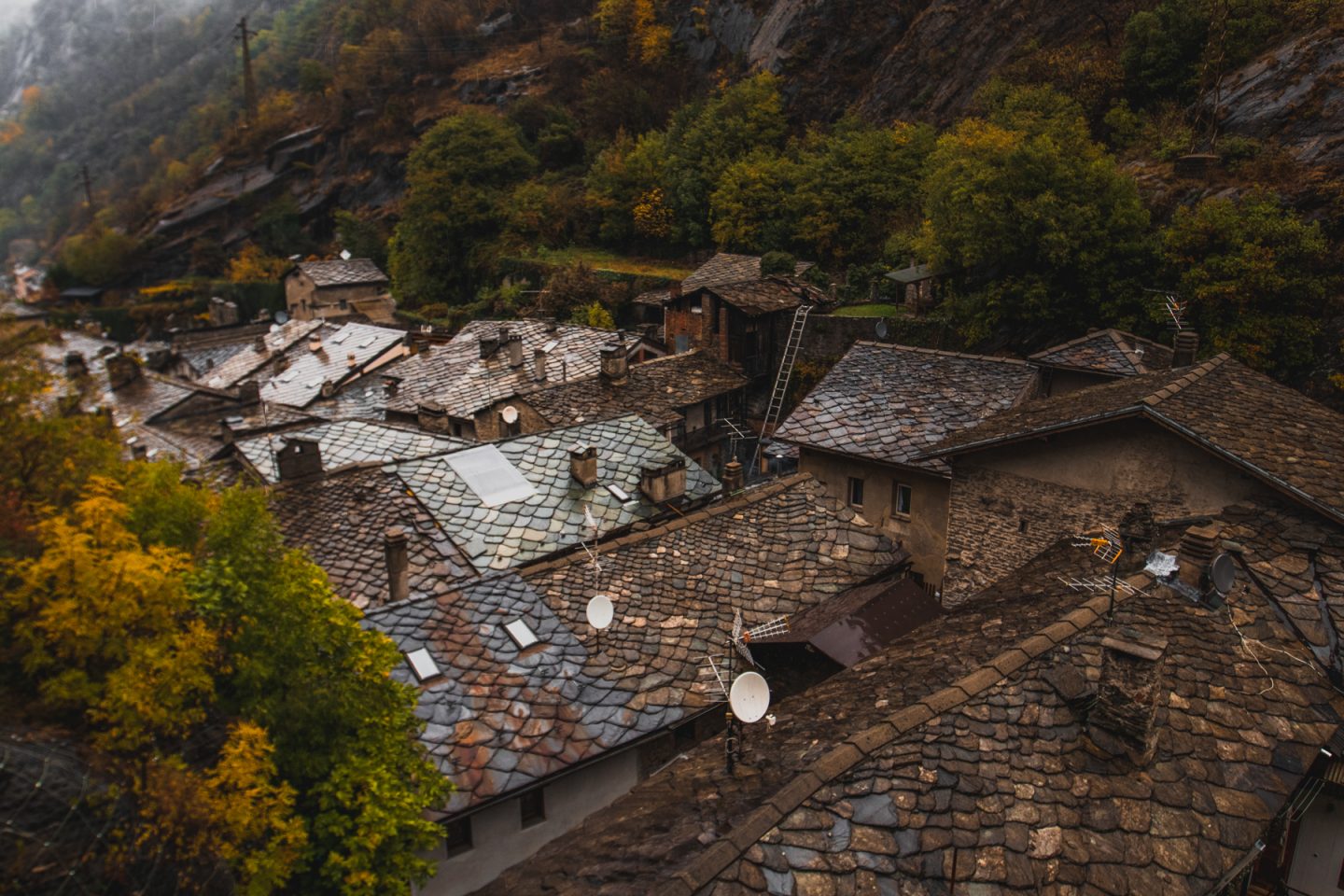
While the Fort of Bard is the most well-known historical monument in this area, the village of Bard also has some unique quirks to know about! The village sits at the foot of the giant fortress, so you will most likely walk through it to get to the ticket office.
As mentioned, the medieval village sits along the ancient pilgrimage road Via Francigena. It was also the passage point for anyone coming from Valle d’Aosta and trying to access the rest of Italy. For these reasons, the village used to be heavily trafficked and even became wealthy thanks to its strategic positions.
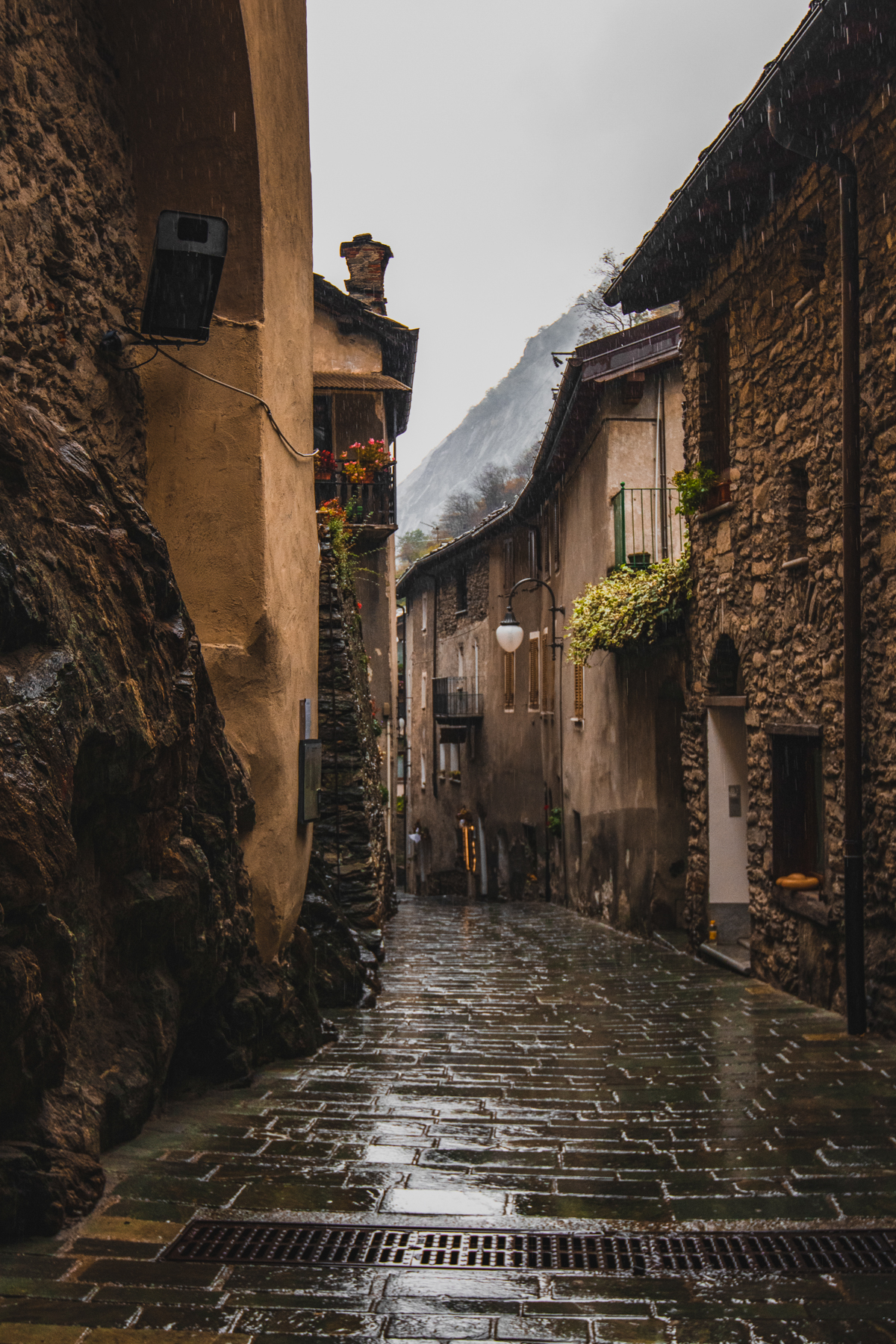
The village today is home to just over 100 inhabitants and its medieval layout is still intact. Some special periods to visit are for the Carnival pageants in February, the Marché au Fort food and wine festival in October, and the Bard Christmas Market in December.
Visiting Italy during the holidays? Discover everything you need to know about Christmas in Italy.
The SGTD Take
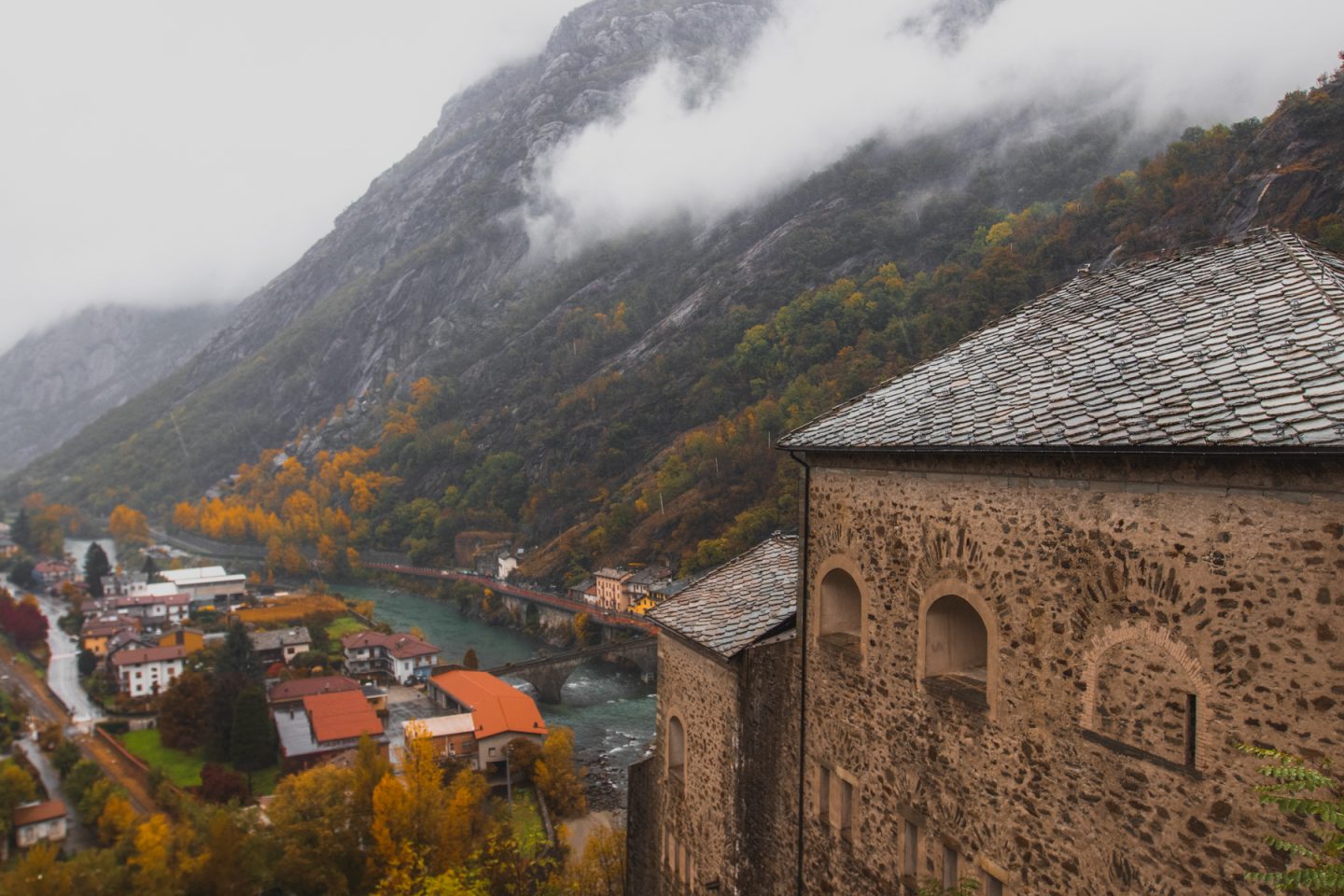
Valle d’Aosta is not usually the first place people think about visiting when planning a trip to Italy. But good things come in small packages!
While Fort Bard is a highlight of this region, I encourage you to get off the beaten path and visit the entire area. The region is home to hundreds of castles, the Western Alps highest peak, Monte Bianco, as well as the Matterhorn, and the oldest national park in Italy, Gran Paradiso.
Now that you have your trip to Fort of Bard planned and ready to go, starting adding more Valle d’Aosta destinations to your bucket list!
What other destinations would you like to know about before visiting Valle d’Aosta?
Italy Trip Planning Resources
- Accommodation: For Italy, I mainly use Booking.com to search and book places to stay.
- Booking flights: I like to search for flights through Skyscanner, but I also book direct depending on the airline.
- Activities & experiences: For things to do that require a ticket, and for more unique trip activities, I use Musement.
- Road trip: For renting a car, I get the best prices by comparing companies with AutoEurope. I then use ViaMichelin to estimate road trip costs and Autostrade.it to find gas stations/have live updates on traffic.
- Transportation: Traveling by public transportation is a great way to see Italy. I use Trenitalia or Trainline to book tickets for trains and Flixbus for long-haul bus trips.
- Accessories: I always travel with this portable charger to stay connected and with a universal adapter to accommodate Italy’s plug types.
- Need help planning an itinerary? Fill out my form for a custom itinerary request!
Save this guide on Pinterest!


I hope you have found this in-depth activity guide to visiting the Fort of Bard helpful in planning your Italy trip!
XOXO
Michela

